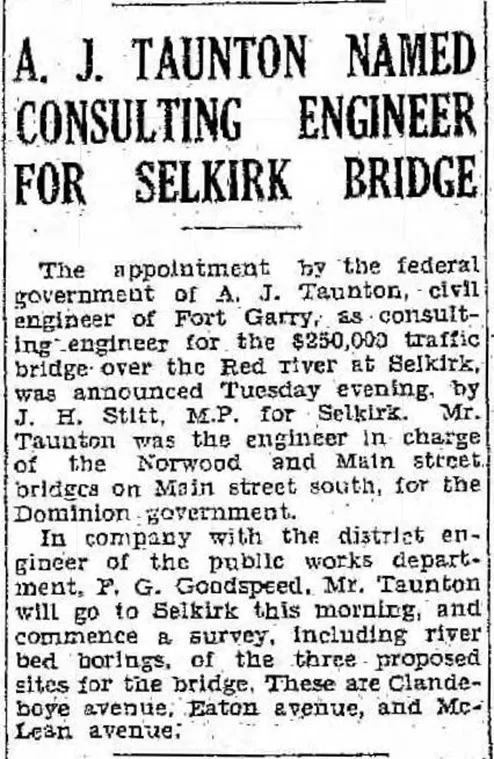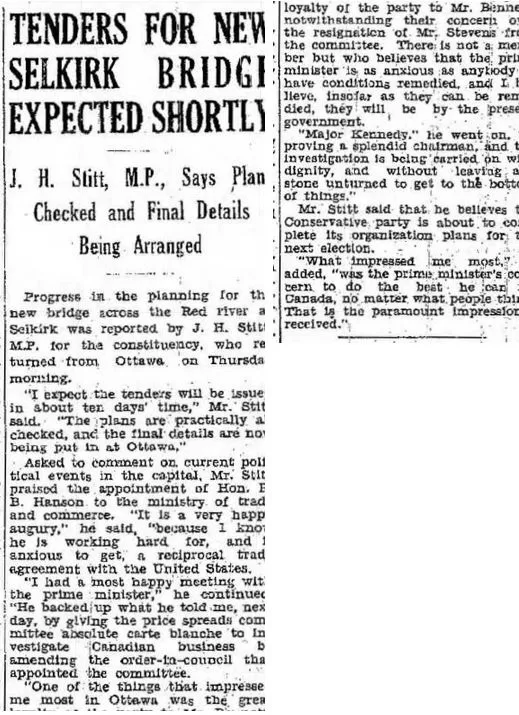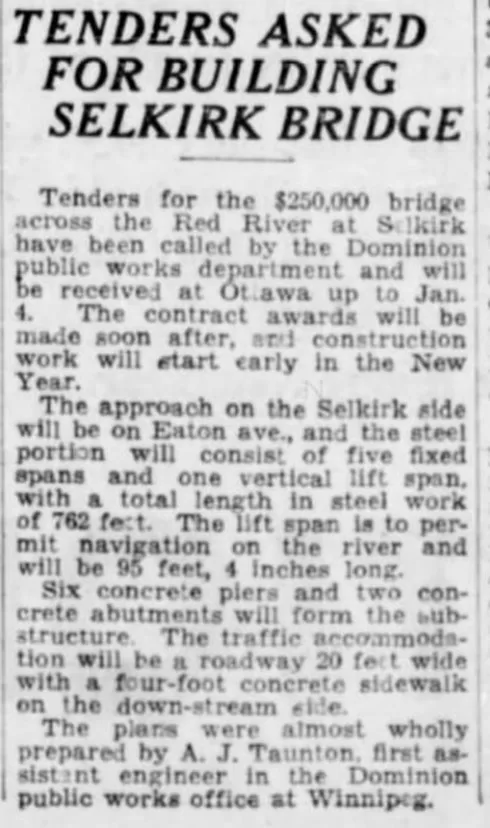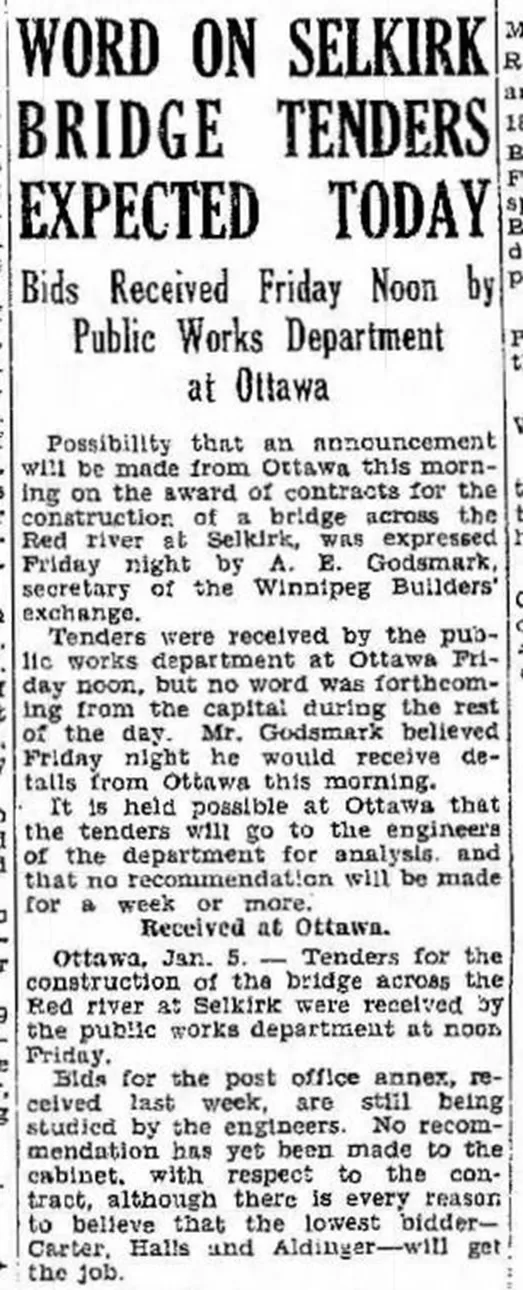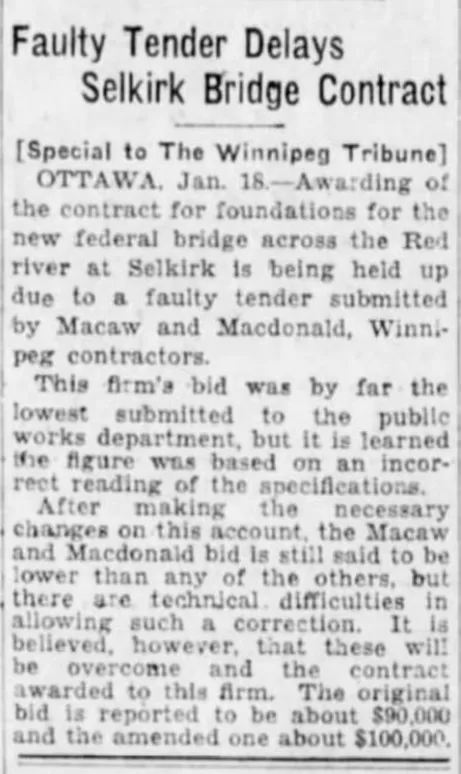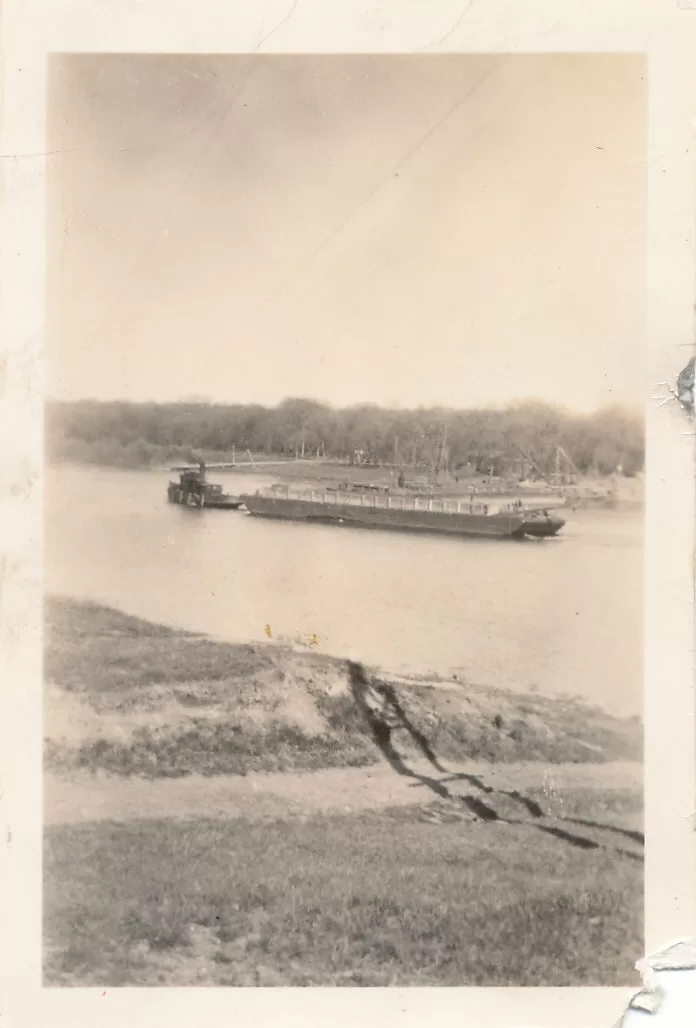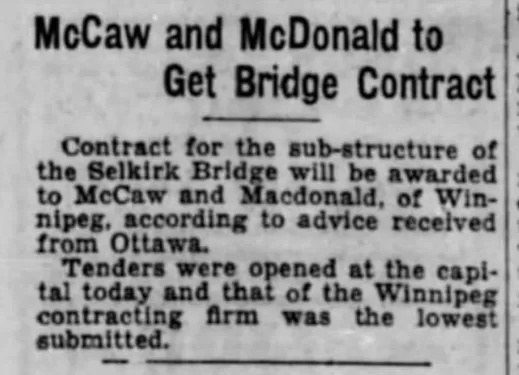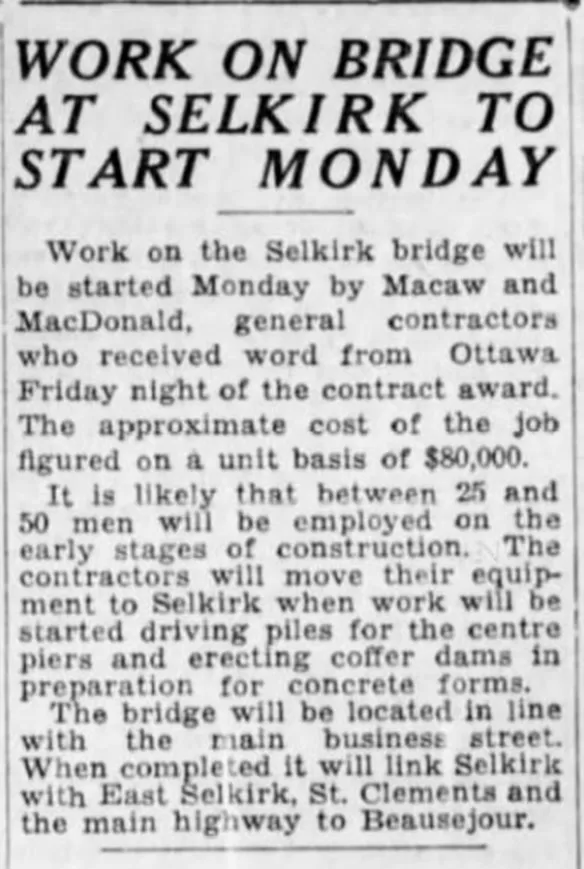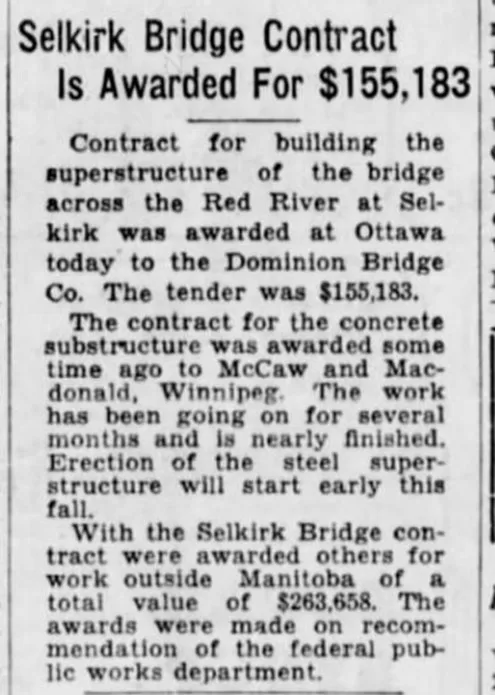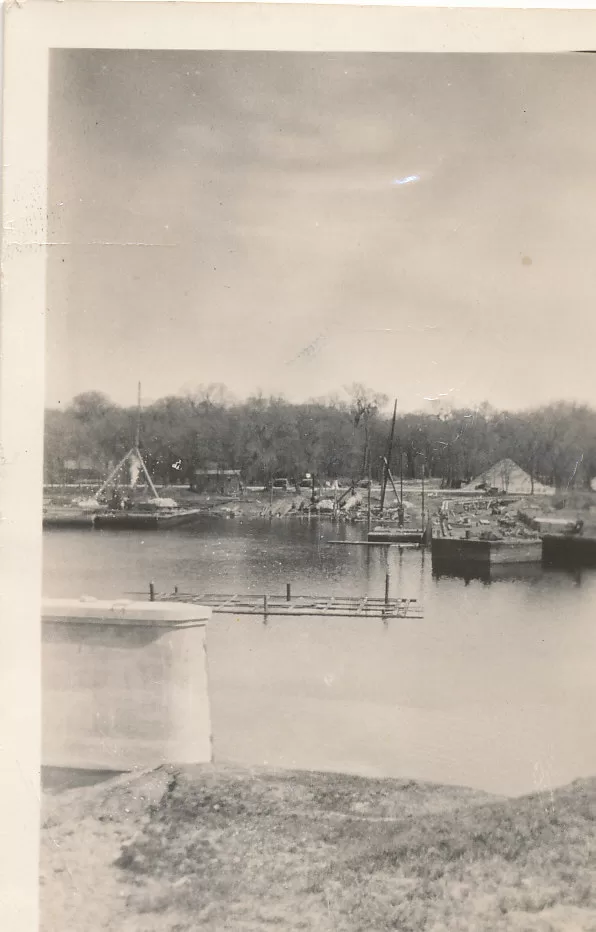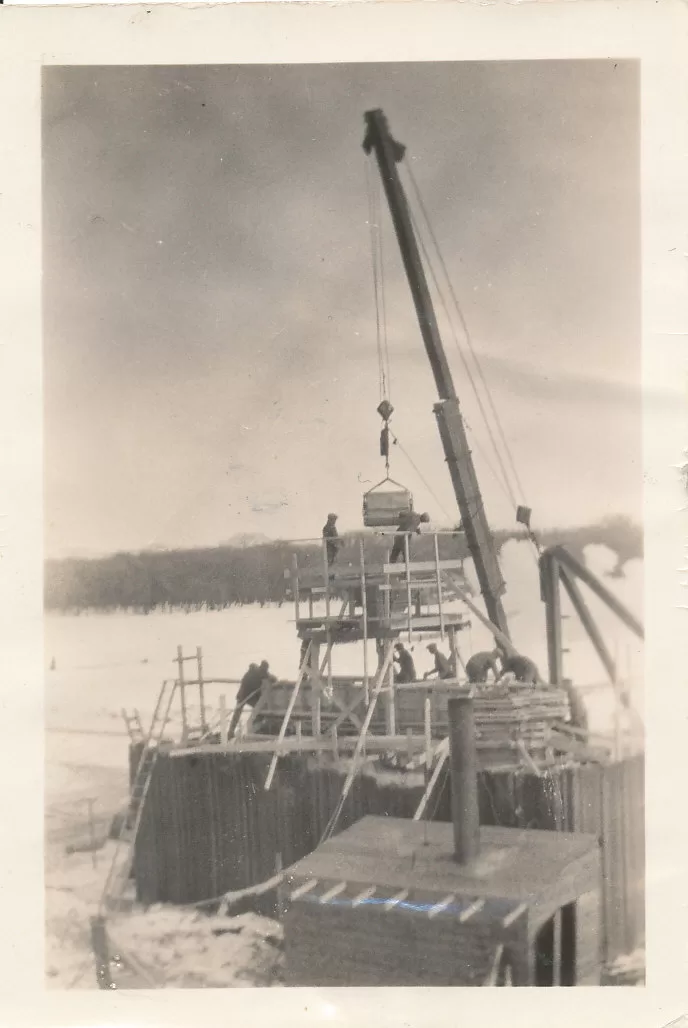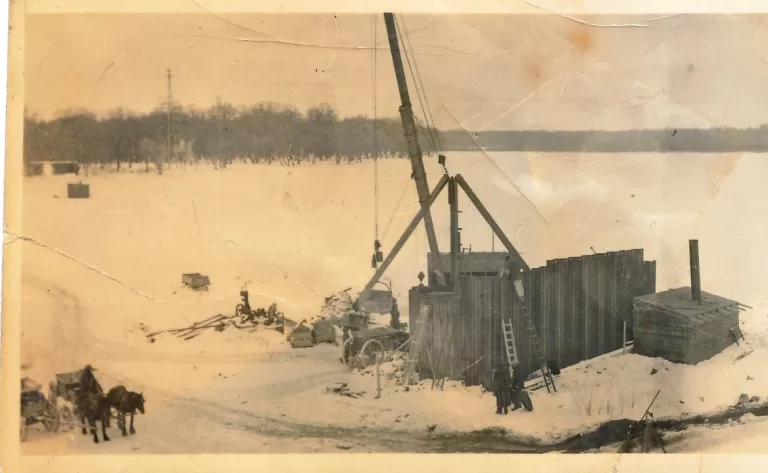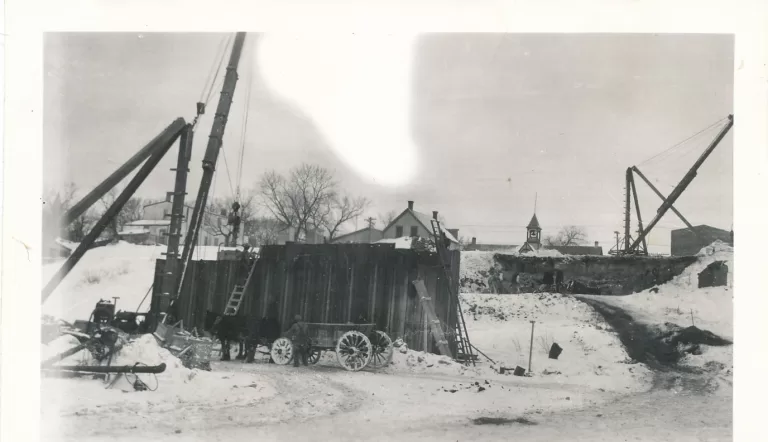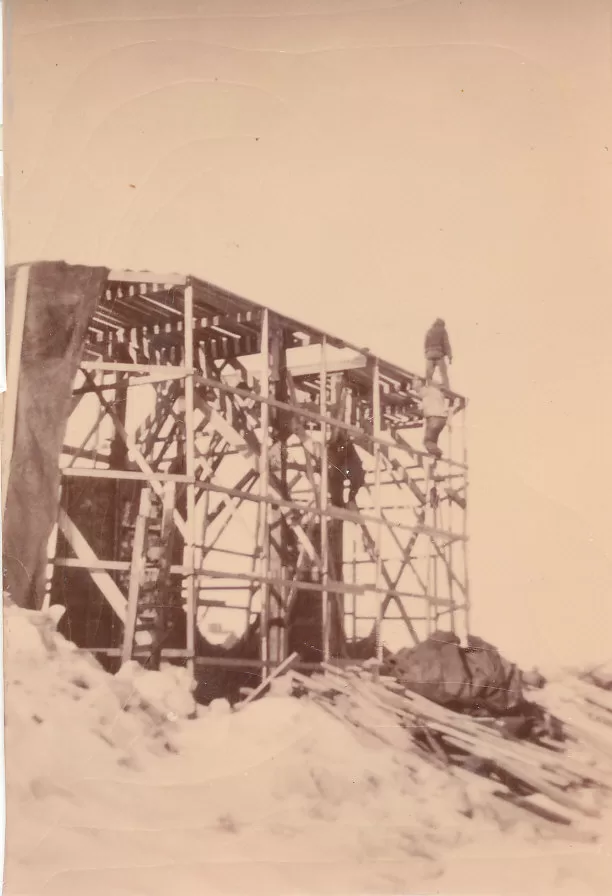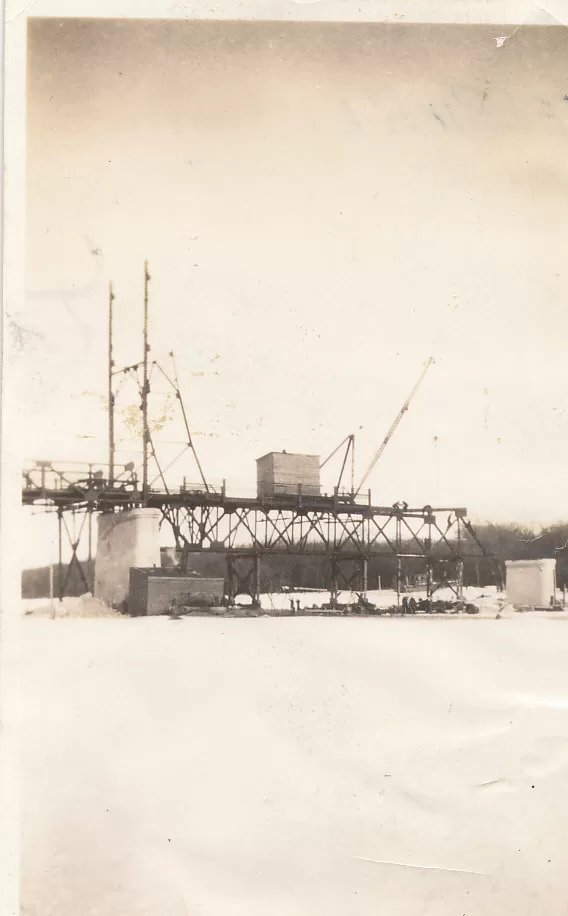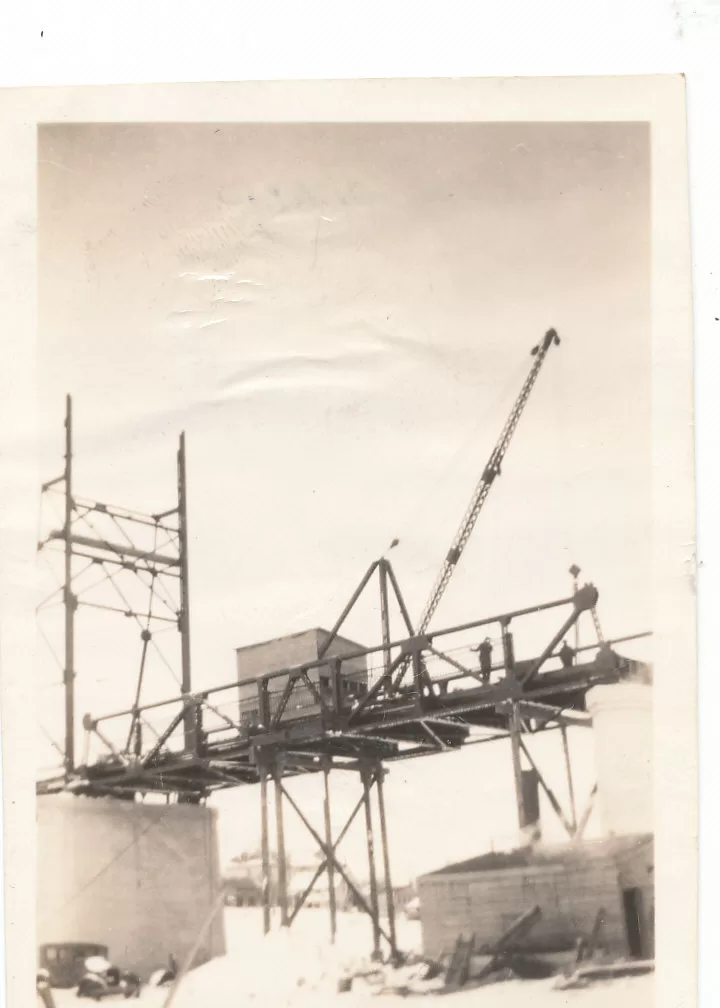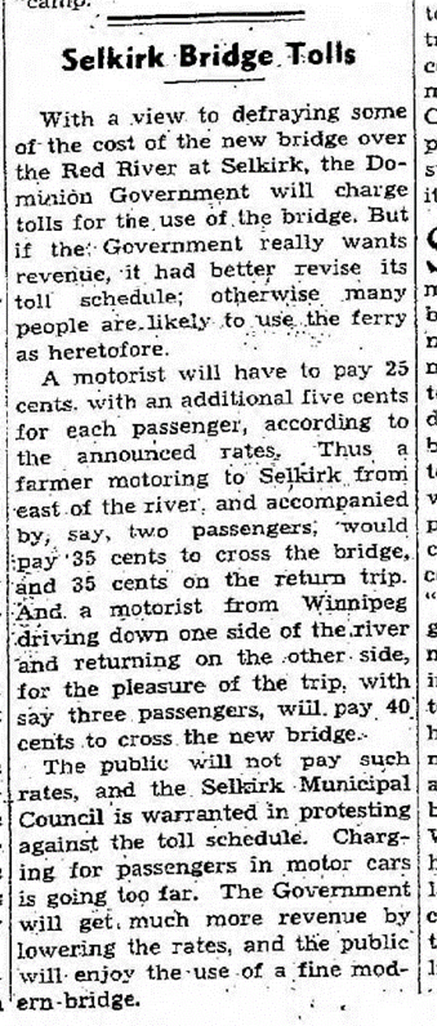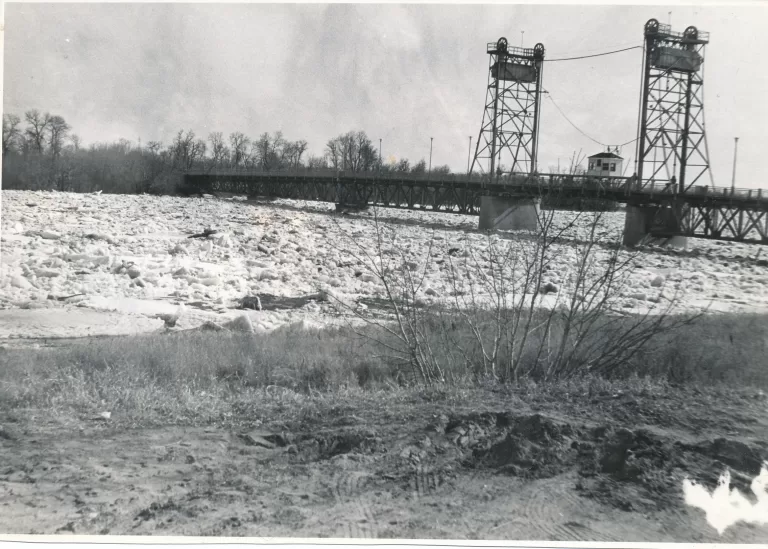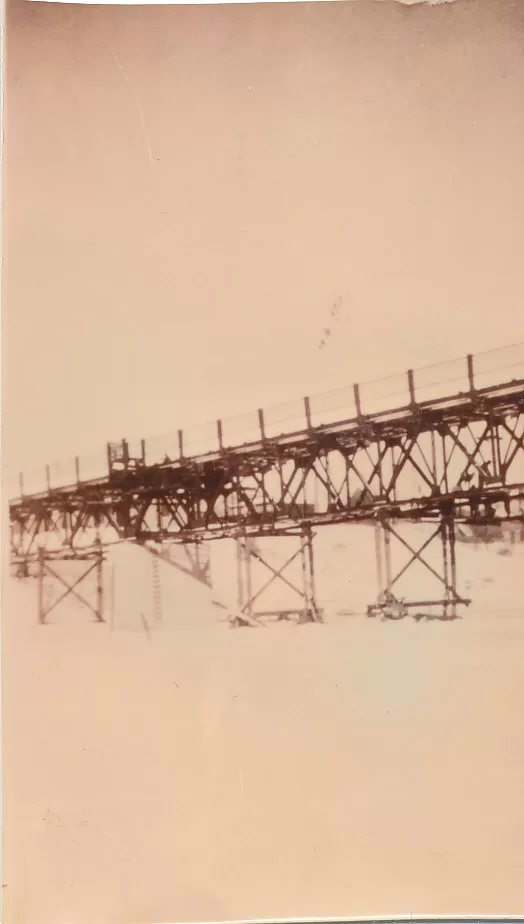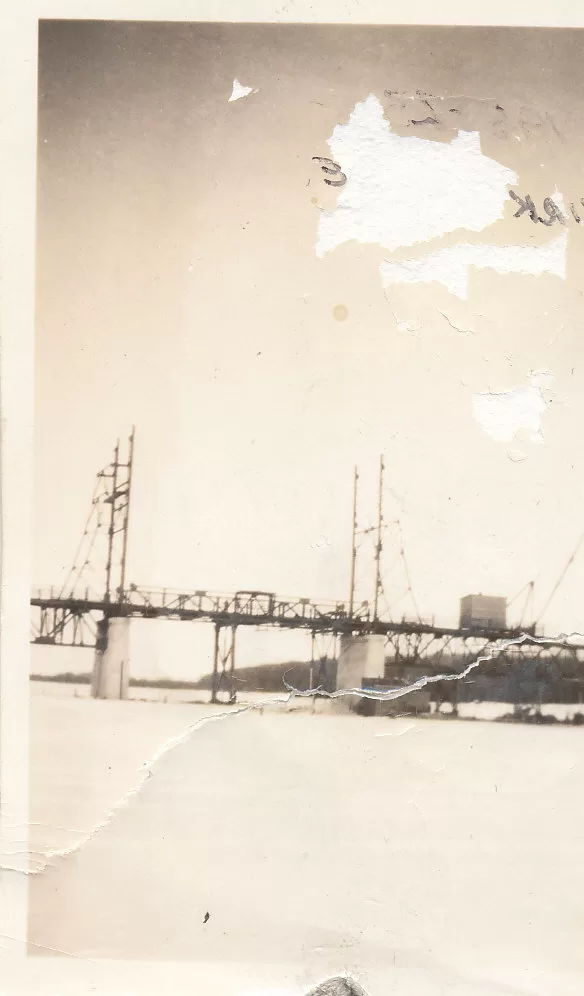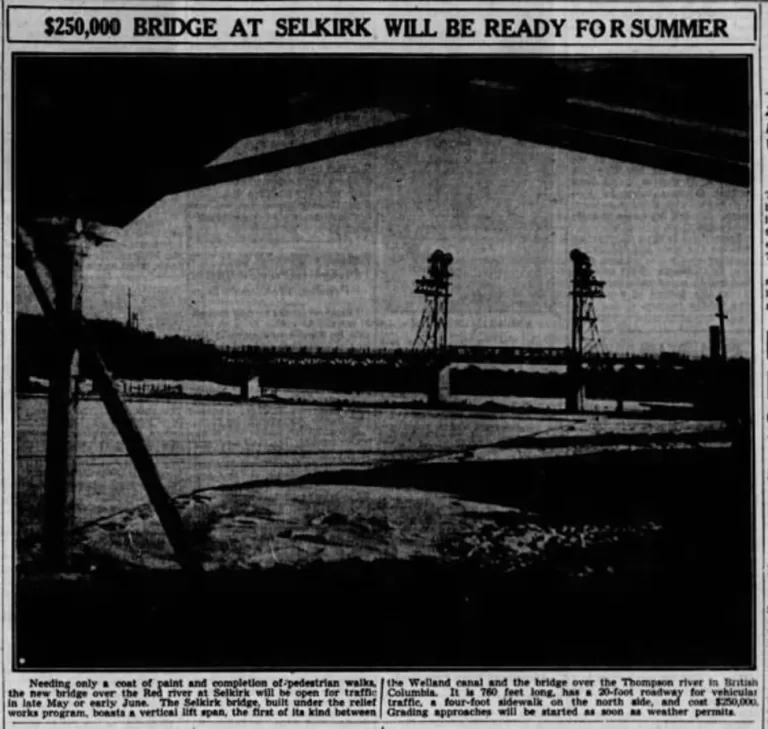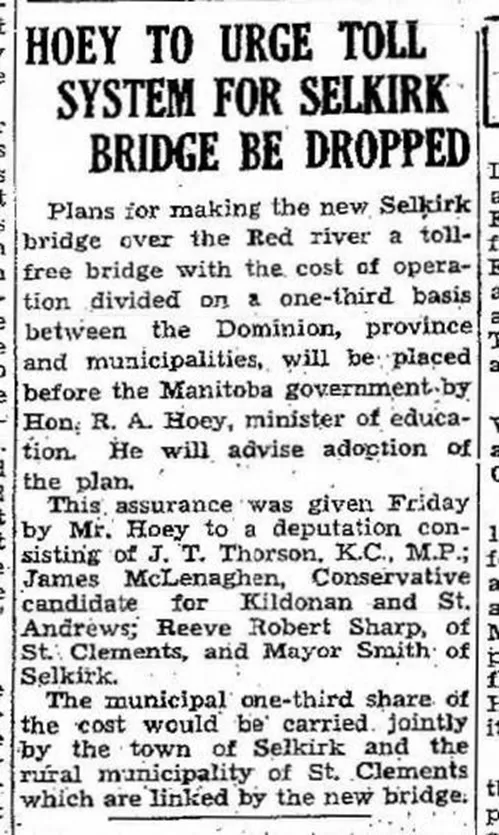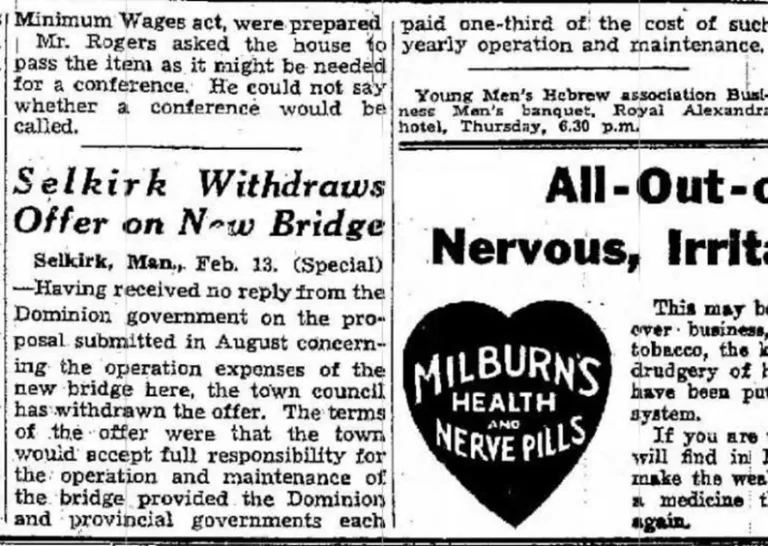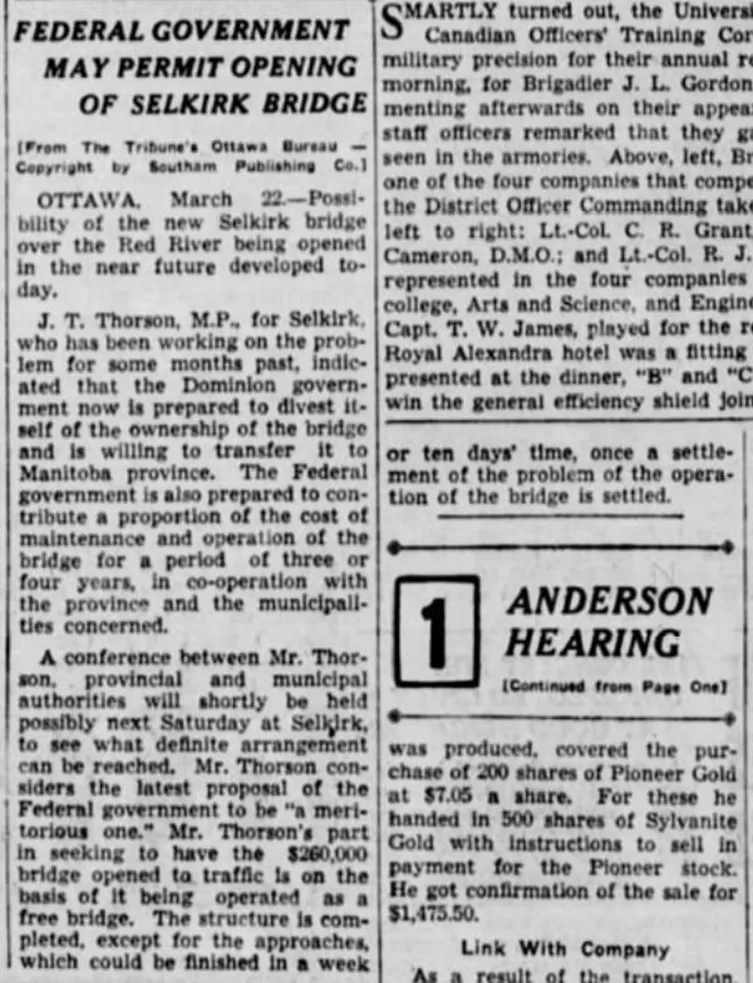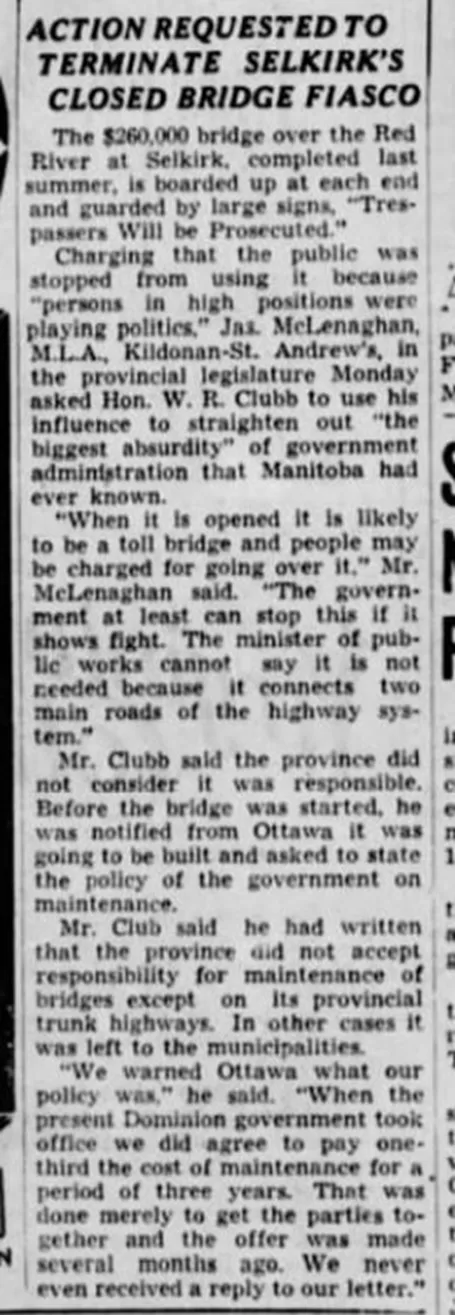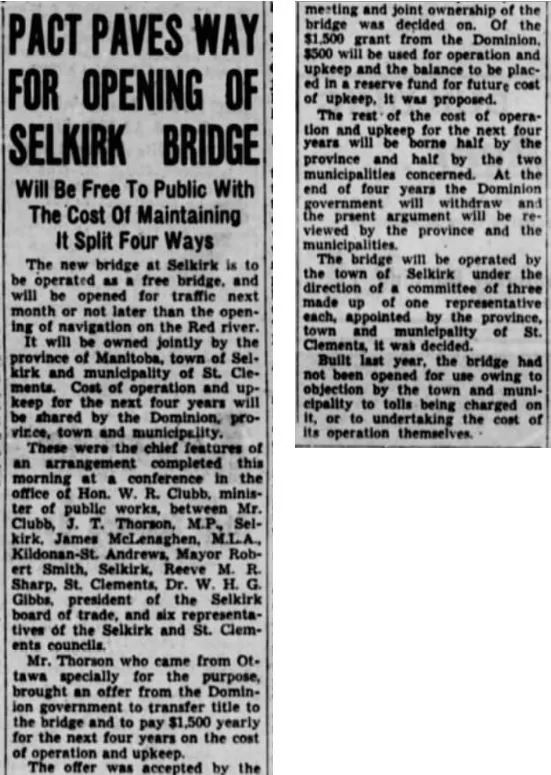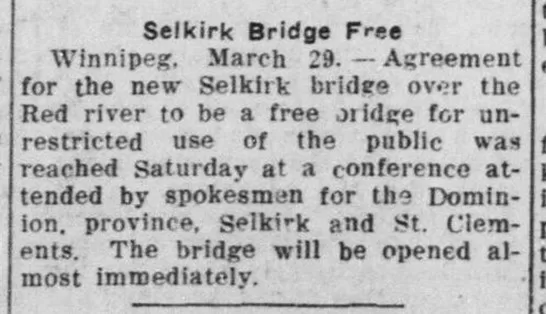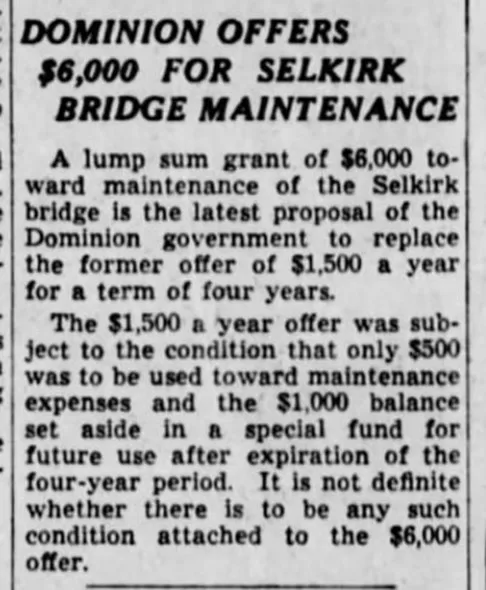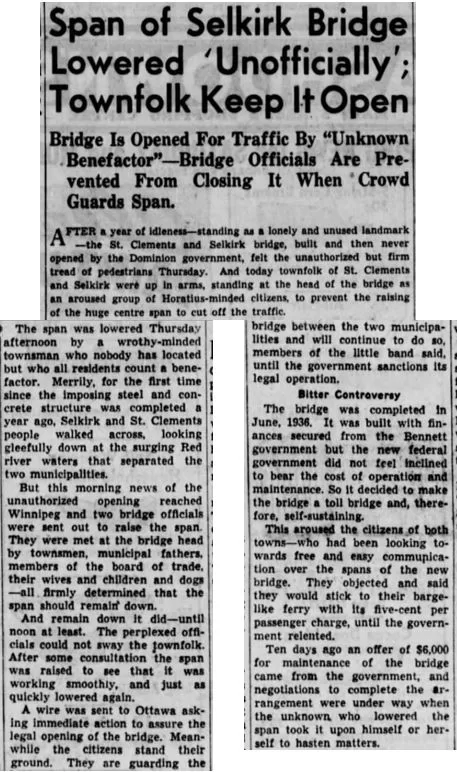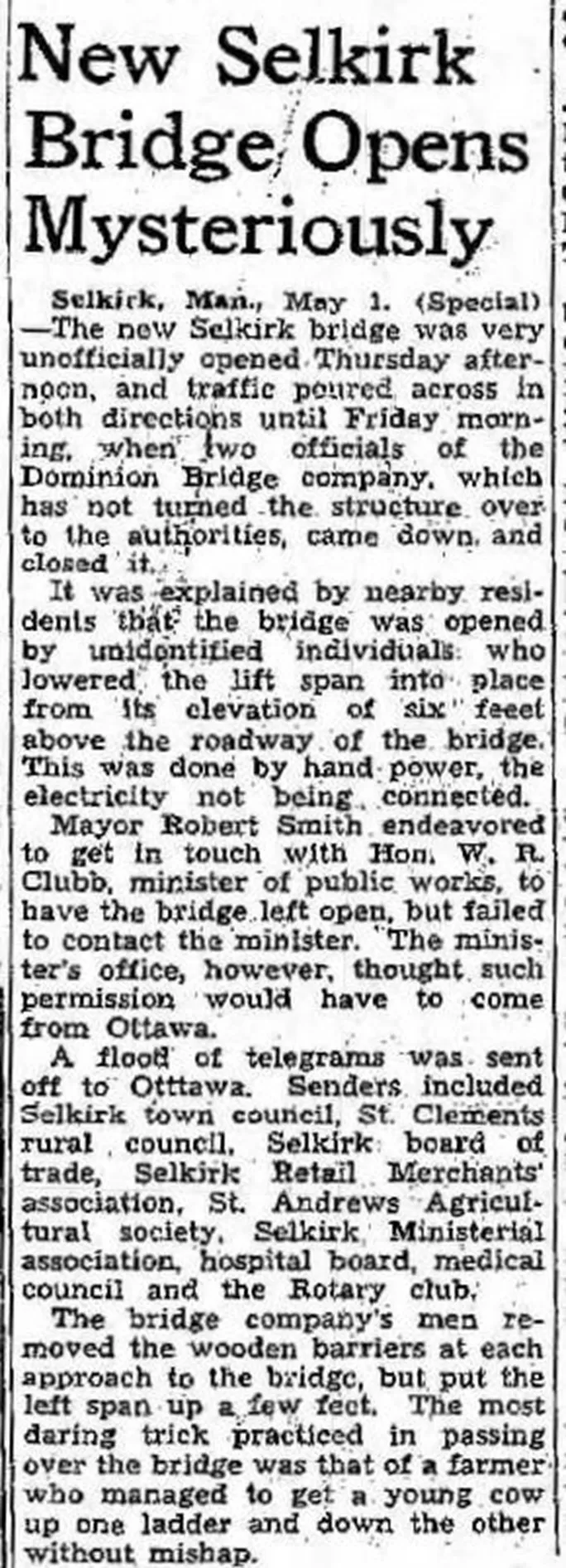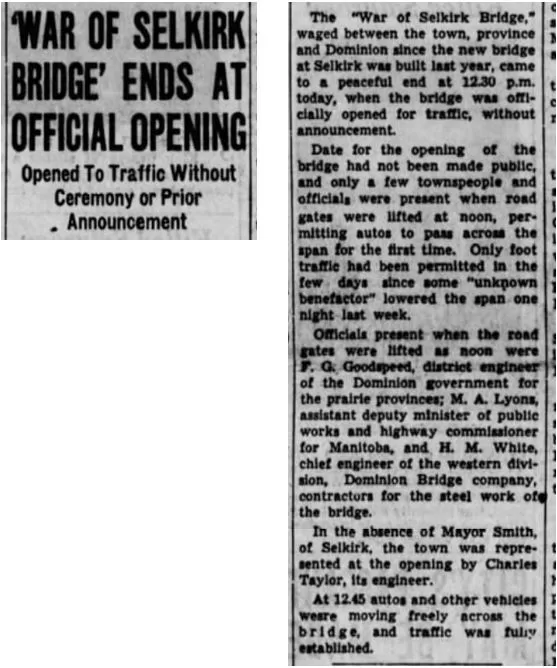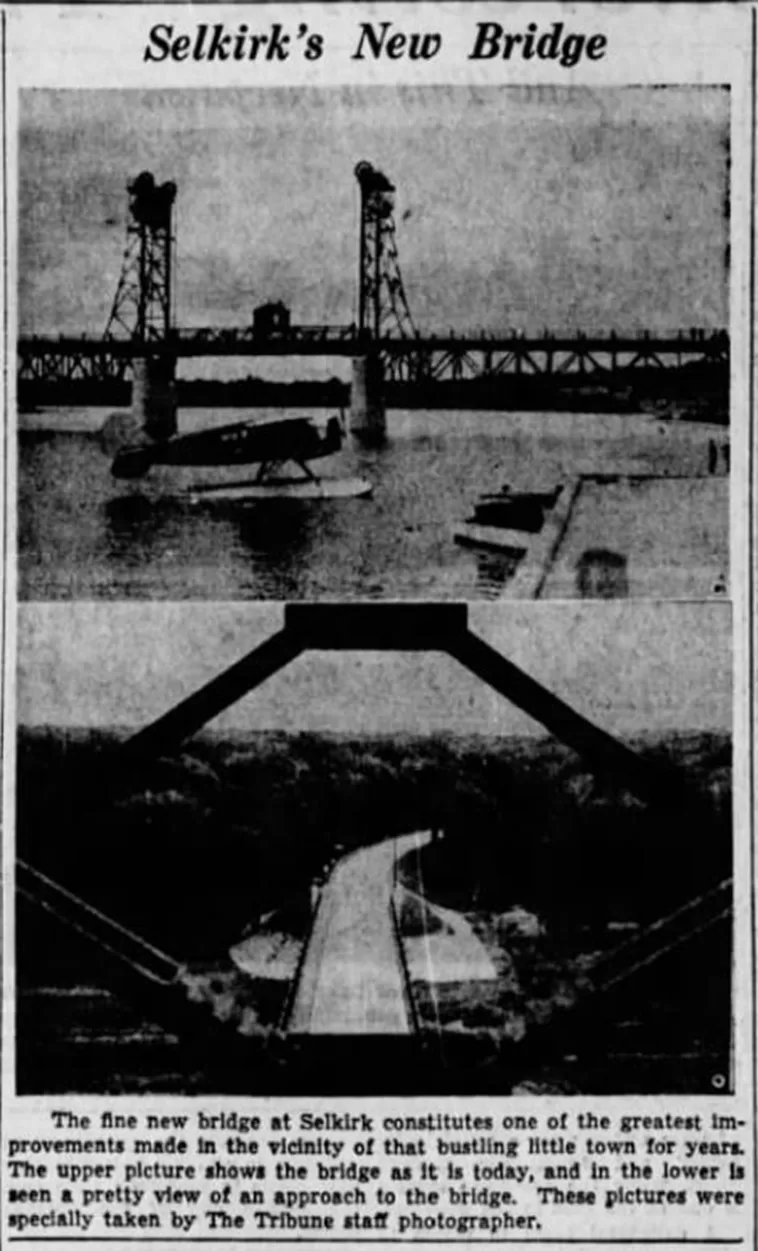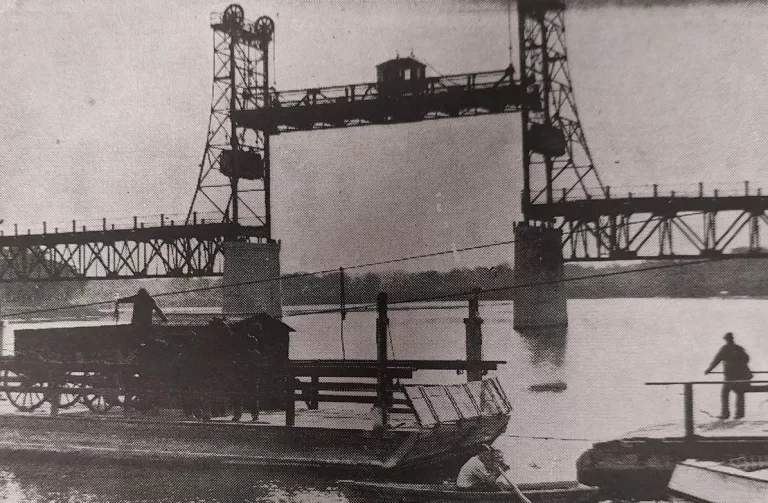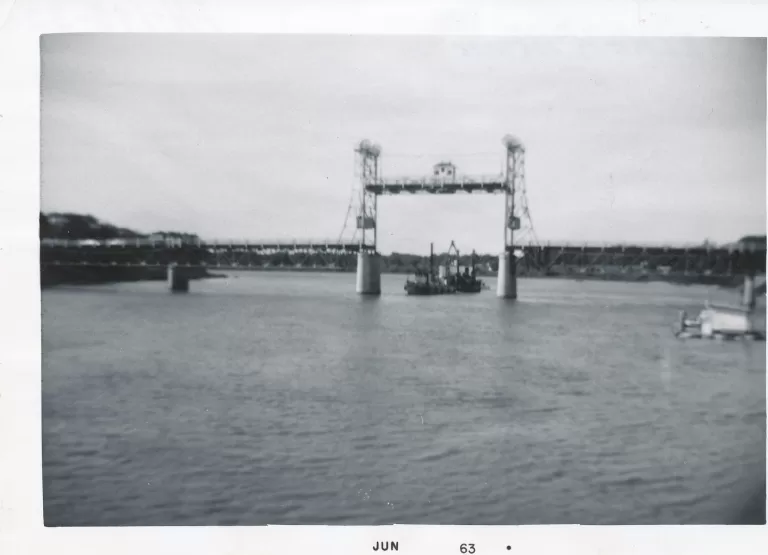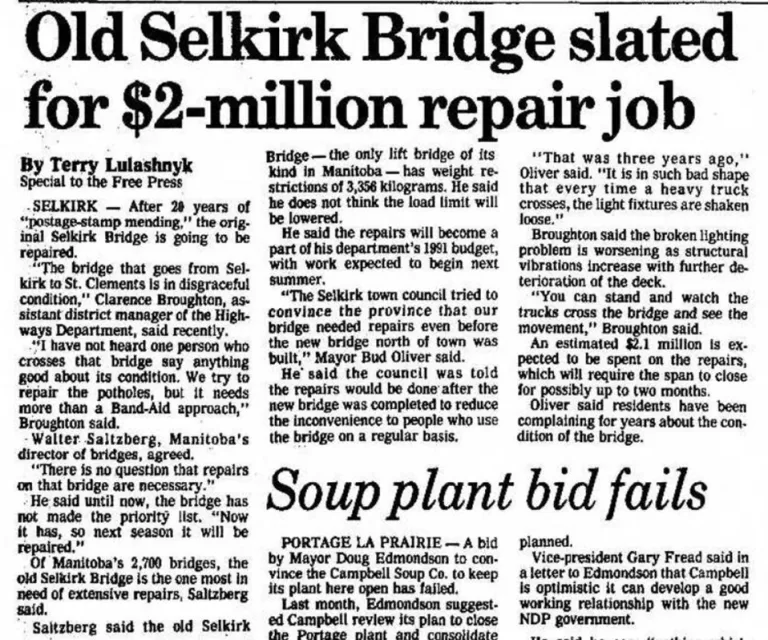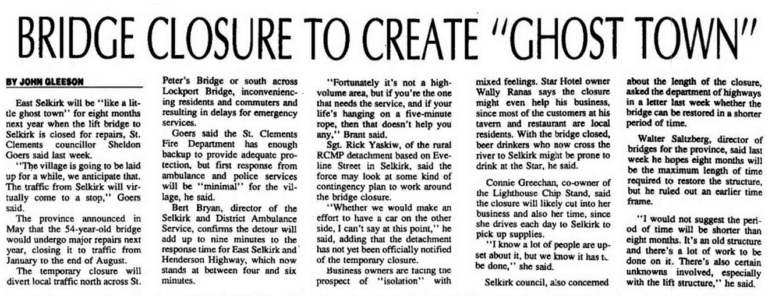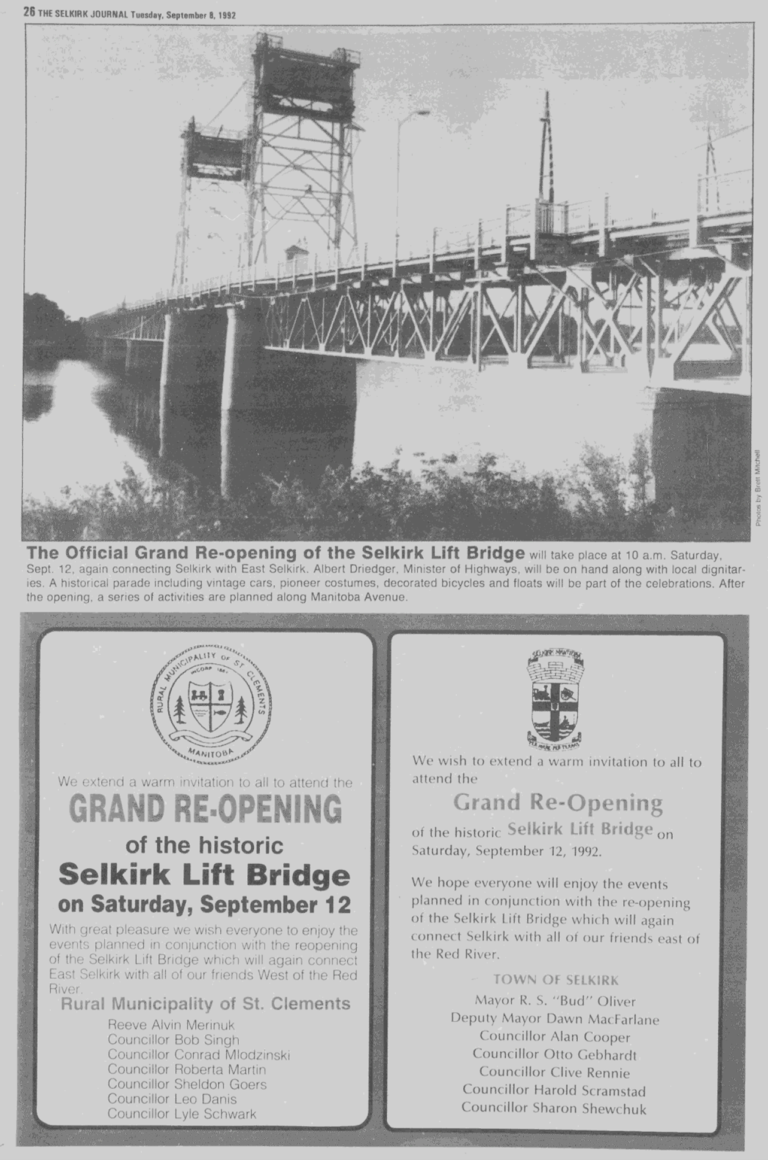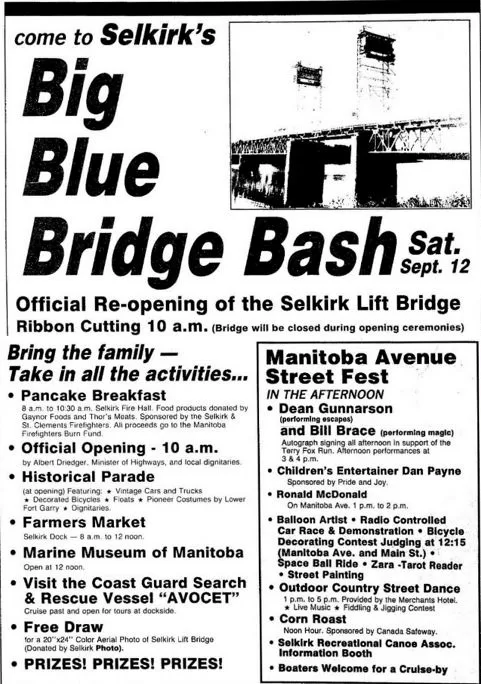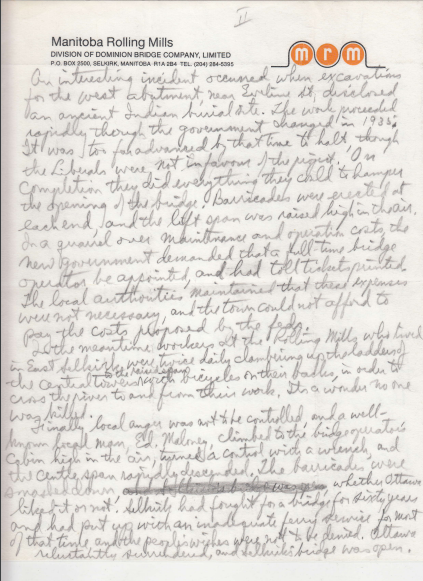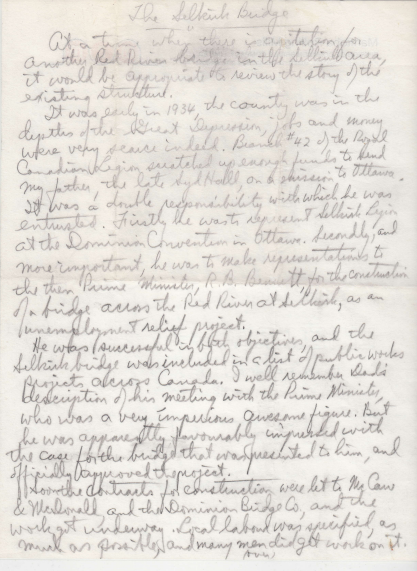The municipalities of Selkirk and St. Clements had long sought out to have a permanent link built across the Red River to replace a busy ferry service, but finding the necessary funds proved elusive. That changed in spring of 1934 when the federal government announced a $40 million national infrastructure program meant to provide employment relief to hundreds of thousands of workers sitting idle due to the Depression.
The short list of approved relief projects was announced in June 1934. Manitoba’s cut of just over $4 million included $250,000 for a new Selkirk to St. Clements bridge. The creation of this project was brought to light when Syd (Sylvester) Hall was given a letter to present to PM Bennet while in Ottawa at a Legion Convention. The letter was a suggestion that a bridge be built in Selkirk as a makes work project during the economic crisis.
The two municipalities sat down in July to determine where the bridge should cross. They chose three possible locations: at Clandeboye, Eaton or Mclean avenues. The final decision would be made by the federal department of Public Works office in Winnipeg.
The man in charge of the project for the federal government was Arthur J. Taunton, the assistant engineer for the federal Department of Public Works in Winnipeg. He decided that the crossing should be at Eaton Avenue and was tasked with designing the bridge and acting as the consulting engineer during its construction.
Taunton was no stranger to bridge building in Manitoba. A long-time provincial government engineer specializing in bridges, he was seconded to the City of Winnipeg to be the resident engineer on a trio of bridge projects there in the early 1930s. He was then hired by the city which seconded him to the federal government for the Selkirk to St. Clements project.
The bridge’s design called for a substructure consisting of two concrete abutments and three concrete piers. Its superstructure would be made up of five fixed steel spans and one vertical lift span in the middle that could rise to allow ships to pass through. On top of this would be a 6-metre-wide road deck with a pedestrian sidewalk on the north side.
Tenders for the bridge’s substructure were called in December 1934, but the awarding of the contract was delayed until early February. The winning bid of around $90,000 was from Macaw and MacDonald of Winnipeg. Work began later that month driving piles for the centre piers and erecting coffer dams for the concrete pours.
Construction moved briskly and by mid-August 1935, Macaw and Macdonald were in the final stages of the substructure work. The tender for the superstructure was awarded on August 30, 1935 to Dominion Bridge of Montreal, which had a large plant in Winnipeg, for its bid of $155,183.
The Battle of Ownership
The bridge was in the final stages of construction in April 1936. The bridge only needed a paint job and the sidewalks and approaches to be built. The official opening was set for another month or so, when an unexpected controversy erupted. No one wanted to take ownership of the completed bridge as it would have meant being responsible for the cost of its upkeep and maintenance.
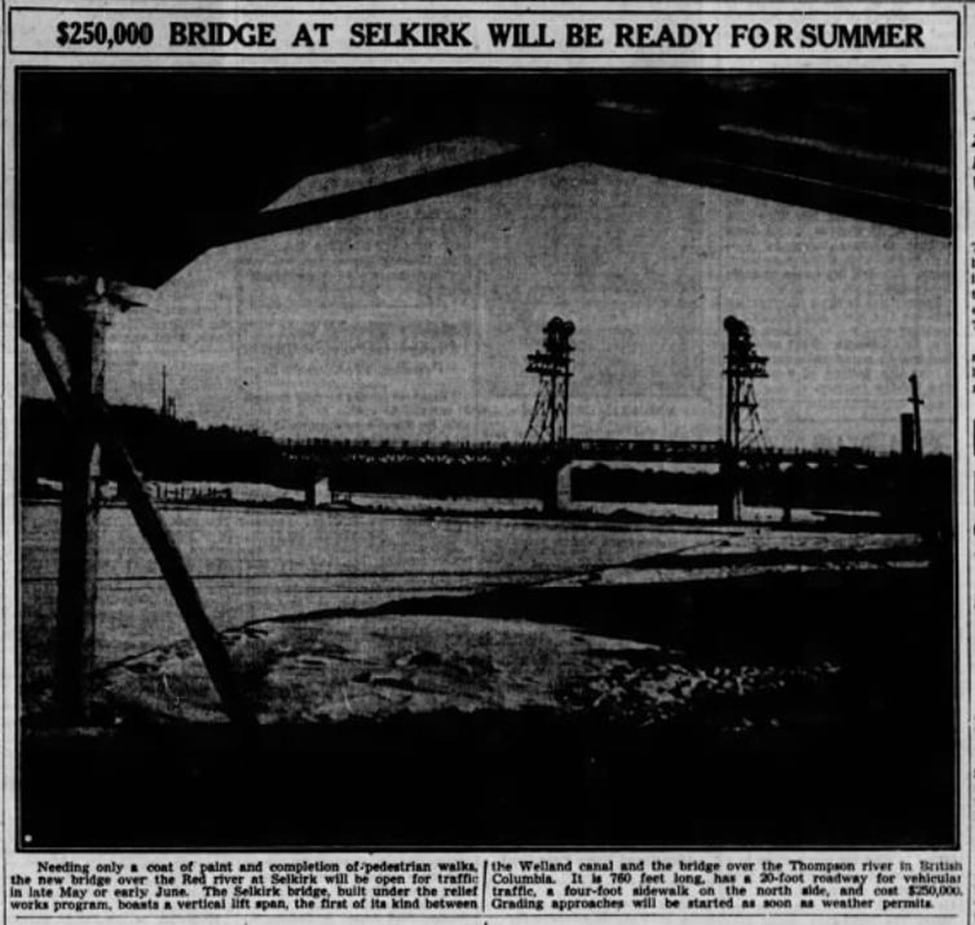
The cash-strapped federal government said if it had to assume operation of the bridge it would charge a toll of up to 25 cents per vehicle and five cents per passenger to cover the costs. Selkirk Mayor Robert Smith, St. Clements reeve Robert Sharp and their respective councils scoffed at this proposal. The Winnipeg Free Press suggested that with such a toll the bridge would go unused as people would continue to use a ferry service.
Despite attempts by area MLA, James McLenaghen, and MP, J. T. Thorson to broker a deal that would see each level of government pay one-third of the cost of its operation, the wrangling continued and the finished bridge stood unused with the middle span raised to accommodate boat traffic for a full year.
On Saturday, March 27, 1937, officials from the federal, provincial, Selkirk and St. Clements governments met in Winnipeg to try again to break the impasse. An agreement in principle was reached that would see the span open as a toll-free crossing with each level of government contributing towards its upkeep. The final details of the deal and the formal transfer of ownership to the province still had to be negotiated.
An Unexpected Force
This additional delay was too much for area residents. On Thursday, April 29, 1937, timbers were placed against the bridge to act as approaches and a citizen by the name of Ed Maloney lowered the lift span, effectively opening it up for pedestrian and vehicular traffic.
Officials from Public Works and Dominion Bridge were dispatched from Winnipeg the next morning to close the bridge but, as described by the Winnipeg Tribune: “They were met at the bridge head by townsmen, municipal fathers, members of the board of trade, their wives and children and dogs – all firmly determined that the span should remain down.”
Officials were allowed to access the bridge to do some test lifts to ensure that all of the equipment was working properly and were escorted off again. Later that day, town officials felt that their point had been made and the span was left up enough so that pedestrians could cross with a small leap, but vehicles couldn’t.
The action got Ottawa’s attention and expedited the grading of the approaches and transfer of ownership. On May 3, 1937, what was dubbed by one newspaper as the “War of Selkirk Bridge” ended when the bridge was formally opened with no prior announcement or fanfare. The towns people were more revered by their local hero, Ed Moloney, who took matters into his own hands to speed up the drawn-out process.
Few people were there to see the occasion. Even the politicians stayed away. Officials in attendance were F. G. Goodspeed, the district engineer for the federal public works department’s prairie region, M. A. Lyons, the province’s assistant deputy minister of public works, Charles Taylor the town of Selkirk’s engineer, and H. M. White, chief engineer of the western division of Dominion Bridge.
Maintenance and Reopening
At 12:45 p.m. the bridge’s centre span was lowered and traffic began moving freely across the bridge.
The bridge’s age began to catch up with it in the 1970s and several short-term repairs were undertaken over the course of the decade. In 1990, an official with the provincial highways department described the structure as being in a “disgraceful condition” and said that it would soon receive extensive work.
The Selkirk Lift Bridge was closed on January 6, 1992 for a $2.8 million major renovation. Work included a new road deck, new mechanical and electrical systems to operate the lift span, and repairs to the concrete piers.The bridge reopened on September 12, 1992 with a vintage car parade and “Big Blue Bridge Bash” street festival. Unlike its original opening fifty-five years earlier, elected officials such as Albert Driedger, the provincial Minister of Highways, and Selkirk Mayor Bud Oliver, were in attendance at the official reopening.
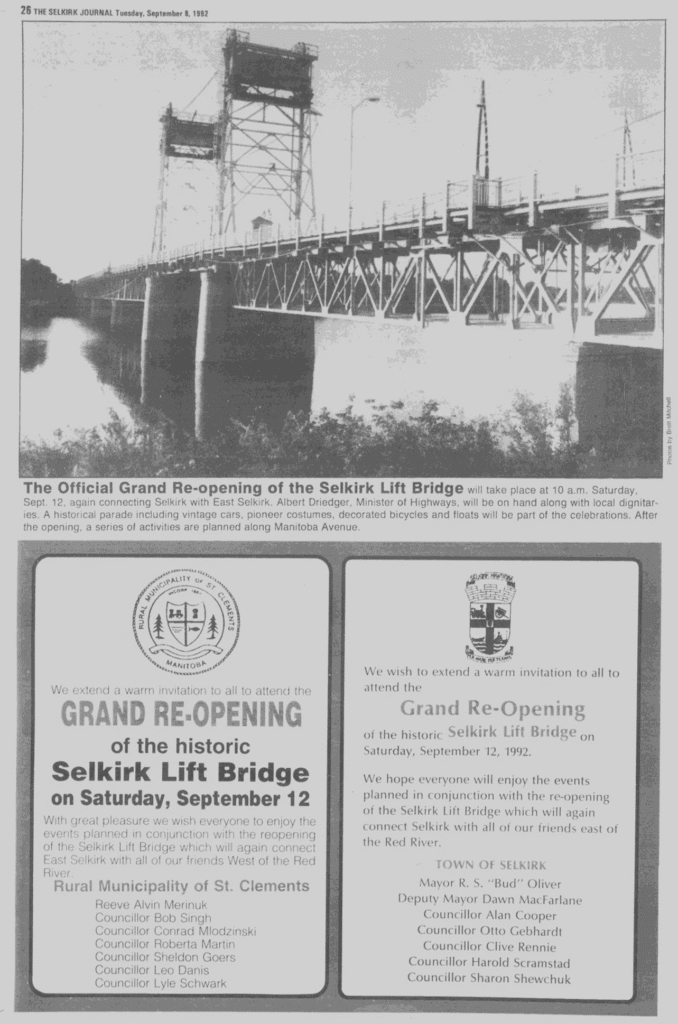
Selkirk Lift Bridge Collection
Sources
Brandon Sun 1937
Interlake Spectator 1991, 1992
Photogelatine Engraving Co. Ottawa
Selkirk Journal 1992
Winnipeg Free Press 1934, 1935, 1936, 1937, 1990
Winnipeg Tribune 1934, 1935, 1936, 1937


